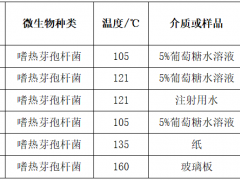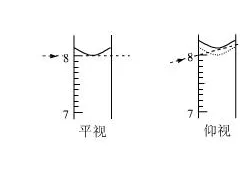Jacques Monod
Also known as: Jacques Monad, Jacques Lucien Monod
Born: February 10, 1910 in Paris, France
Died: May 31, 1976 in Cannes, France
Occupation: biologist
Source Database: Encyclopedia of World Biography
Table of Contents
Awards | Biographical Essay | Further Readings
BIOGRAPHICAL ESSAY
Jacques Monod (1910-1976) was a French biologist who discovered messenger RNA, a crucial factor in the functioning of the cell.
Jacques Lucien Monod was born in Paris, France, on February 10, 1910. He spent most of his youth in Cannes, in the south of France, where he went to high school. He developed an interest in biology from his father, who was an avid reader of Darwin. In 1928 he went to Paris to pursue a college education at the Faculte des Sciences of the University of Paris. He received a Bachelor's degree in natural science in 1931, at which time he obtained a fellowship to work with Edouard Chatton at the University of Strasbourg. He was engaged in research on the evolution of life from 1932 to 1934, when he was appointed assistant professor of zoology at the Faculte des Sciences.
In 1936 he obtained a Rockefeller fellowship to study genetics at the California Institute of Technology. Back in France he received his D.Sc. in 1941 from the University of Paris and was appointed laboratory chief at the Pasteur Institute in 1945. Eight years later he became the head of the institute's department of cellular biochemistry. He was appointed full professor at the Faculte des Sciences in 1959 and director general of the Institute Pasteur in 1971. Jacques Monod died of illness in 1976. He had been married to Odette Bruhl, who died in 1972. They left twin sons, Olivier and Philippe.
Monod shared the Nobel Prize in Physiology/Medicine in 1965 with Andre Lwoff and Francois Jacob for his role in elucidating the nature of messenger RNA (ribonucleic acid) and the operon structure of the gene. At the time he did his work the field of genetics was in a state of turmoil. It had been discovered that DNA (deoxyribonucleic acid) was the primary chemical constituent of the hereditary material--"the genetic code." What was not known, however, was the process by which DNA contained in the nucleus could confer the genetic information it carried to cellular regions outside the nucleus (the cytoplasm). How did the DNA "communicate" with enzymes (biological catalysts) and other structures involved in protein synthesis, all of which were located in the cytoplasm? It was this mystery that Monod set about solving.
Biologists had known for some time that RNA differed from DNA in that it is present both inside the cell nucleus and in the cytoplasm, whereas DNA is only present in the nucleus. Mahlon Hoagland and Paul Zimmerick of Harvard University had shown that the carrier of amino acids in the cytoplasm during certain chemical reactions was a type of RNA they dubbed "transfer" RNA. Scientists at the Oak Ridge National Laboratories discovered that, after bacteriophage (a virus composed of a core of DNA surrounded by a layer of protein which infects only bacteria) infection, a kind of RNA was formed that was similar to the DNA originally in the bacteriophage. They named this type "DNA-like RNA." While this substance was subsequently isolated in other laboratories, its role in the formation, or synthesis, of protein remained a mystery.
In the mid-1940s Monod found that the synthesis of an enzyme known as-galactosidase could be prevented by infection by bacteriophage without affecting the actual activity of the enzyme. This was a curious discovery, and it prompted him to look for the relationship between-galactosidase and the gene which coded for its production. After several years of research he found that there was a relationship between the activity of the enzyme and protein synthesis.
Monod carried out more experiments in this area in 1958 with Francois Jacob and Arthur Pardee. The results of these experiments and others led Monod and Jacob to propose the ideas of messenger RNA and the operon. Their idea was that, through a process resembling the one in which DNA reproduces itself within the nucleus, a kind of RNA is formed from the DNA template that contains an exact copy of the genetic information contained in the DNA. This RNA was the "DNA-like RNA" observed earlier; Monod and Jacob named it messenger RNA, due to the communicative role it played between structures located on either side of the nuclear membrane. Upon entering the cytoplasm messenger RNA associates itself with ribosomes, which are small granules composed of ribosomal RNA, essential to protein synthesis. The messenger-ribosomal RNA complexes then combine with transfer RNA to initiate protein synthesis.
The operon is composed of a series of structural genes regulated by a single shared gene known as their operator. If the operator is "open," the genes can generate messenger RNA; when it is "closed," there is no messenger RNA. The idea of the operon helped to explain certain important aspects of enzyme synthesis as well as aspects of phage phenomena. The idea of messenger RNA is extremely important because it explains the previously missing link in how DNA initiates protein synthesis, which is a crucial factor in the ability of cells to function.
Jacques Monod received the Louis Rapkine Medal in London in 1958. Two years later he was designated an honorary member of the American Academy of Arts and Sciences. In 1963 he was awarded the Legion d'Honneur, one of the highest distinctions possible for a Frenchman. He possessed a great love for music, almost accepting an invitation offered him by an American orchestra to be their conductor. He was also extremely interested in literature and spoke fluent English.
-- Gabrielle Hecht
AWARDS
Legion d'Honneur, 1963; Nobel Prize, 1965.
FURTHER READINGS
· An in-depth study of Monod's life and work is presented in Origins of Molecular Biology: a Tribute to Jacques Monod (1979), edited by André Lwoff and Agnes Ullmann. A short autobiography by Monod is printed in Nobel Prizes 1965, issued by the Nobel Foundation. A detailed explanation of some of the scientific phenomena described in this article can be found in Biological Science (1968), an introductory biology text.
Source Citation: "Jacques Monod." Encyclopedia of World Biography, 2nd ed. 17 Vols. Gale Research, 1998. Reproduced in History Resource Center. Farmington Hills, MI: Gale Group. http://galenet.galegroup.com/servlet/History/

